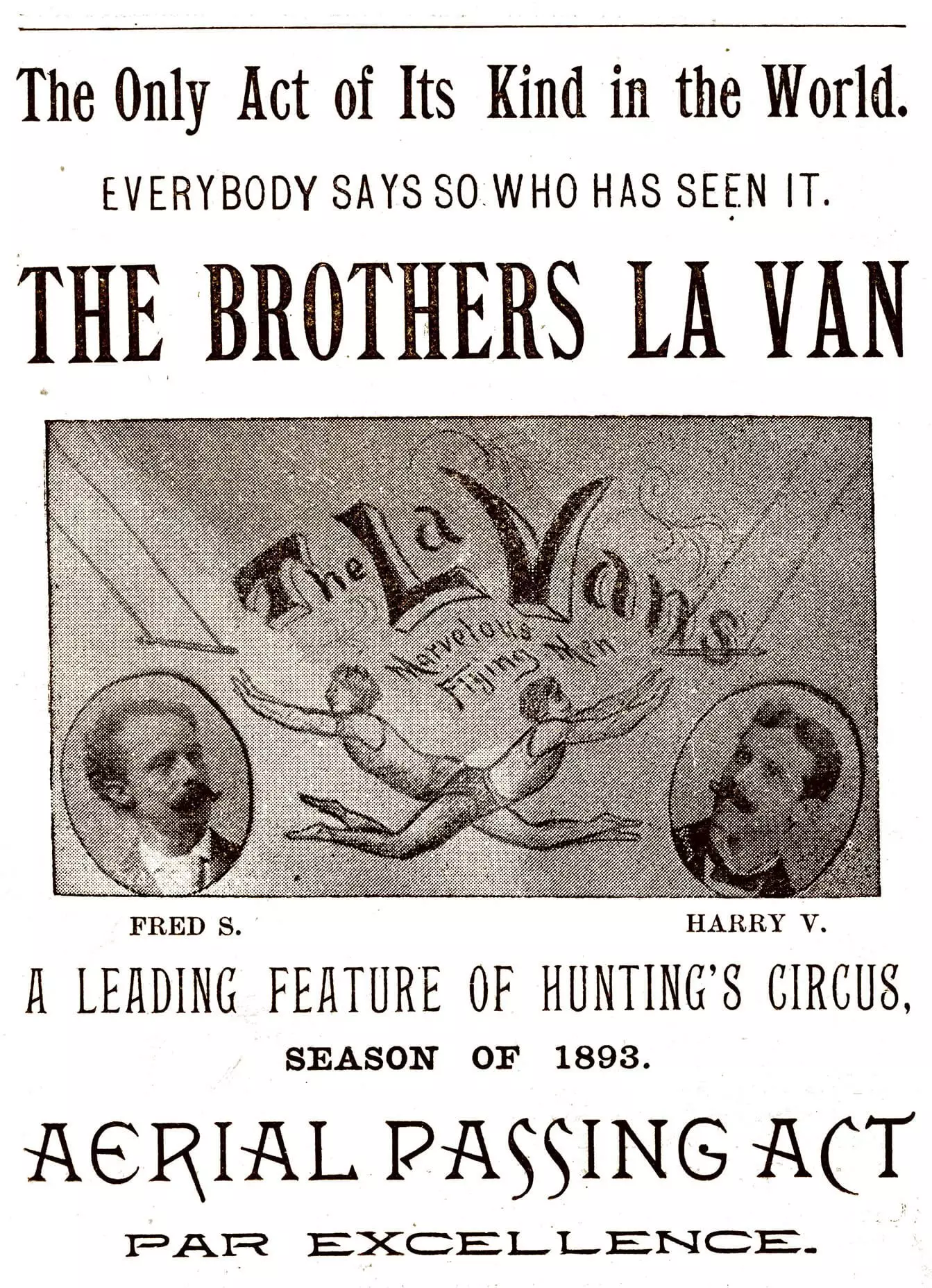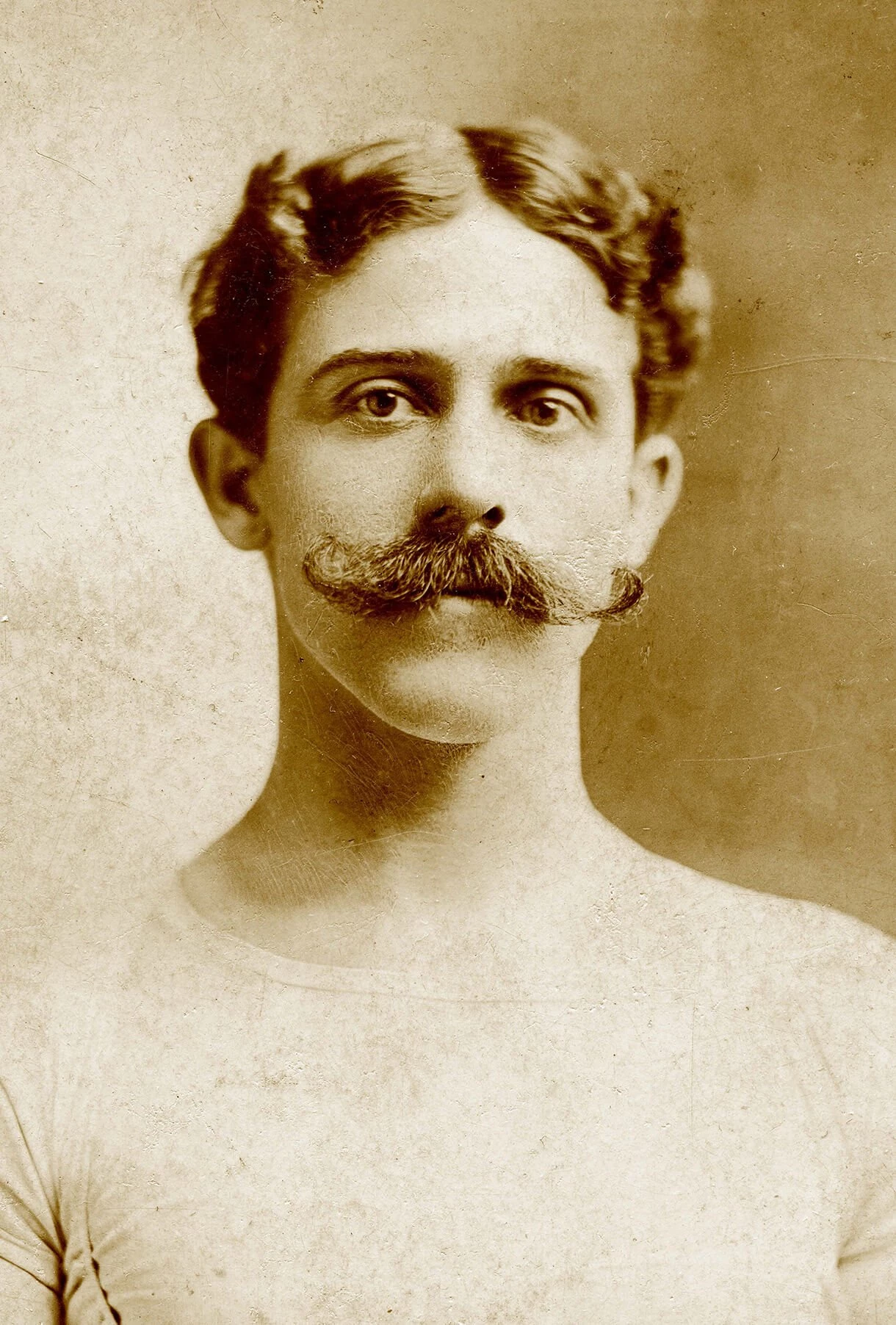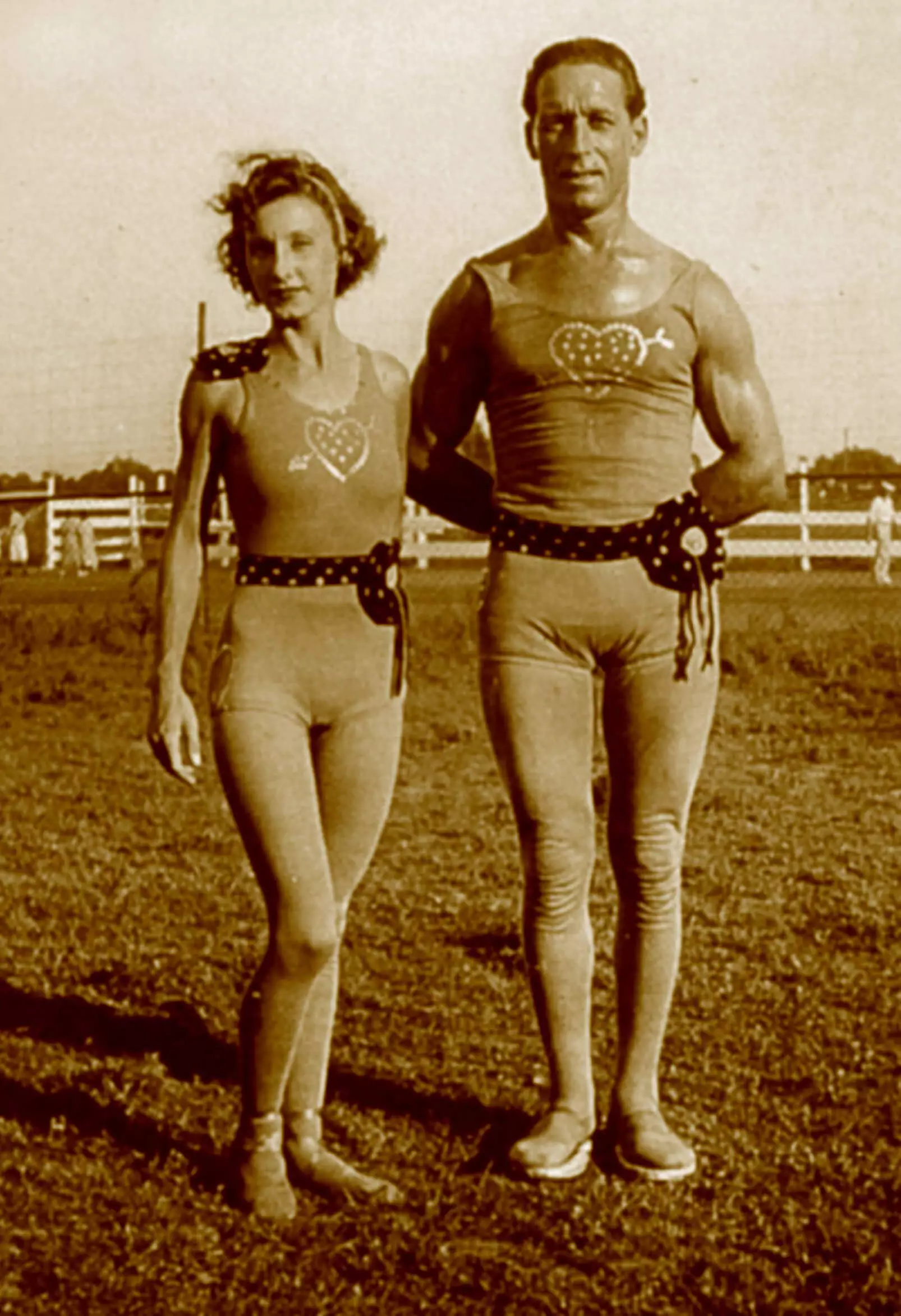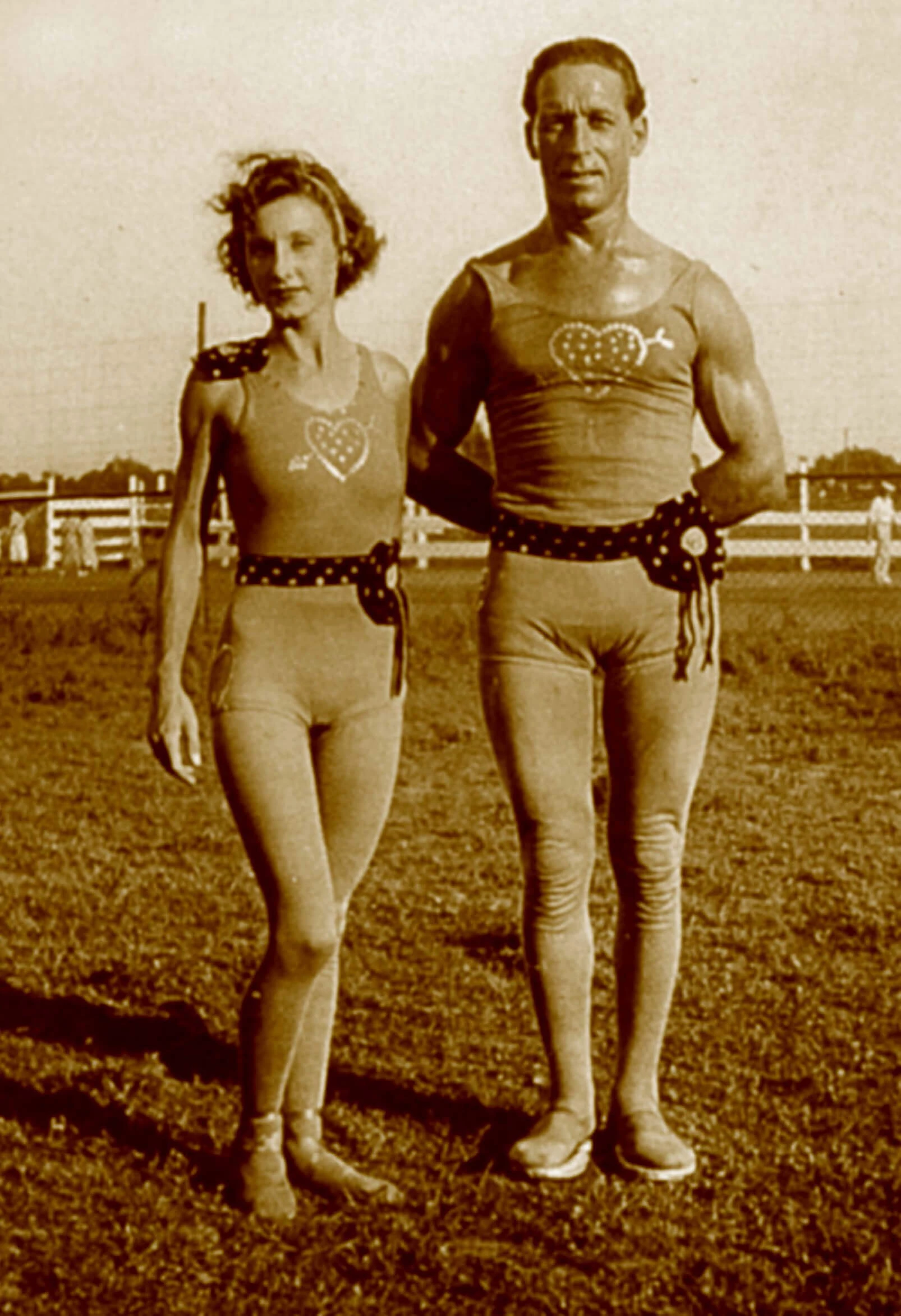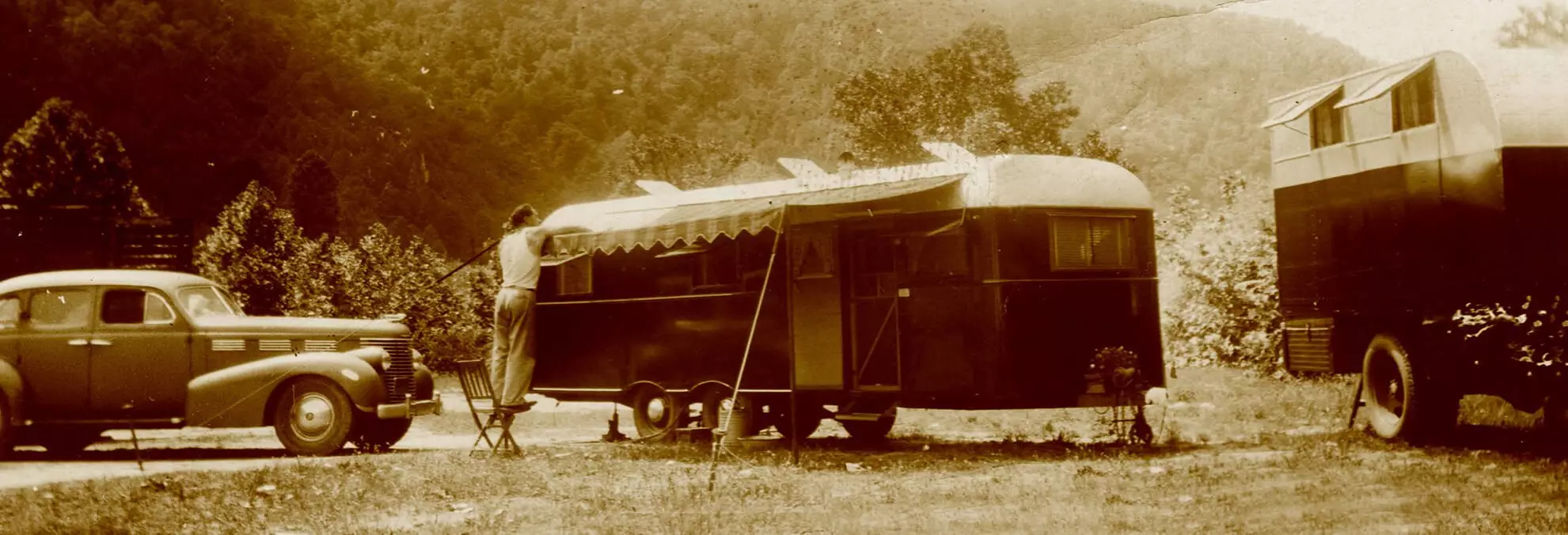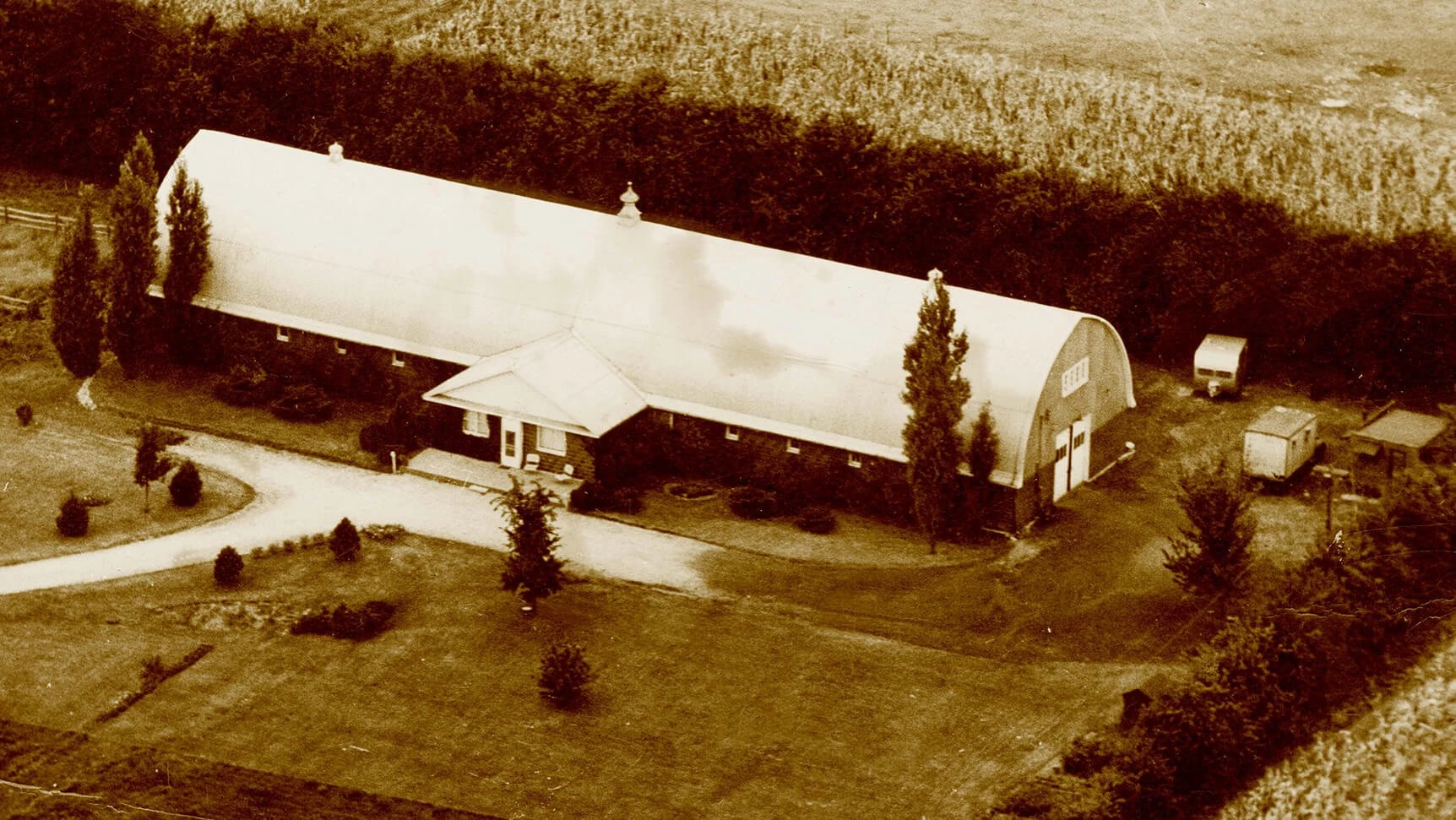Circus Performers
Troupes of circus performers arrived in Bloomington as early as the 1860s. It wasn’t long afterwards that area youth began careers as trapeze artists.Featuring: Fred Green, (1858 – 1897), aerialist circus performerHoward Green, (1867 – 1952), aerialist circus performerHarry Green, (1867 – 1952), aerialist circus performersGeorge Valentine, (1898 – 1955), aerialist circus performerLorraine Mather Valentine, (1914 – 1987), aerialist circus performerBrothers Fred (1858-1897), Howard (1867-1952), and Harry Green (1867-1952) grew up helping at their father’s confectionery.
But when it came time for them to venture out on their own, they chose a very different career. Fred and Howard built a rig in the family barn and soon mastered aerial stunts, which they modeled after those done by the trapeze artists they admired.
By 1878 Fred and Howard, known as the “Brothers LaVan,” had an act with the Pullman and Hamilton Circus.
In the winter they returned to Bloomington to prepare and practice for the next season. They attracted other aerialists to Bloomington who also used the family barn. Thus began the practice of aerial artists wintering in Bloomington, which soon became known as the “Aerialist Capital of the World.”
Fred and Howard’s father did not like their career choice, but could not stop them from doing what they loved. But something else could.
What might that have been?
In 1880 Howard suffered a serious injury that ended his circus career, but Fred continued to perform and teamed up with two other aerialists known as the “Royal Russian Athletes” (although none were Russian).
The youngest Green brother, Harry, joined the circus too. In 1889 he and Fred revived the “Brothers LaVan” name and performed across the U.S. until ill health forced Fred to retire in 1896.
After Fred’s retirement, Harry was joined by his wife, Amy, and various other flyers in the renamed act, the "Flying LaVans." After perfecting their skills with Harry, many of these “other flyers” left to start their own acts.
Harry retired in 1937. But until his death in 1952, he continued to train aerial artists at Bloomington’s YMCA and contribute to Bloomington’s legacy as the aerialist capital of the world.
George and Lorraine Valentine
George Valentine (1898-1955), like so many others, became a flyer after being enthralled by circus aerialists. George’s brothers, Bill, Fred, and Roy, also became flyers and performed together in various acts. But George wanted to have his own act. In 1932 he was introduced to a young lady who, having watched many practices at Bloomington’s YMCA, was also interested in flying. Soon after that George began training Lorraine Mather Valentine (1914-1987). They were married in 1935.
That year George, Roy, and Lorraine toured as the ”Flying Valentinos.” Their “thrilling” performances included blindfolded leaps and other daring and dangerous moves.
“The most wonderful artists on the circuit . . . put on a ‘hair raising’ show. . . Mrs. Valentino who has won for herself the name of ‘Mrs. Take-a-chance Valentino,’ in her part of the death defying act, is only 20 years of age.”
— Hearne Democrat (TX), May 24, 1935
In 1947 George and Lorraine purchased the Happy Acres Stables in Normal and converted the barn into an aerialist training center, which they named Circus Haven.
George and Lorraine’s daughter Cherie was born in 1948. Four years later she had her official circus debut, performing a bird’s nest on a trapeze.
George Valentine “Flying Valentinos” costume, Lorraine Valentine “Valentino Sisters” costume, Cherie Valentine costume, circa 1953
View this object in Matterport
Lorraine made all the costumes used by the “Flying Valentinos,” as well as Cherie’s costumes.
Donated by: Cherie Valentien
2017.01.1-3
 Making a Home
Making a Home
 A Community in Conflict
A Community in Conflict
 Working for a Living
Working for a Living
 Farming in the Great Corn Belt
Farming in the Great Corn Belt
 Abraham Lincoln in McLean County
Abraham Lincoln in McLean County


